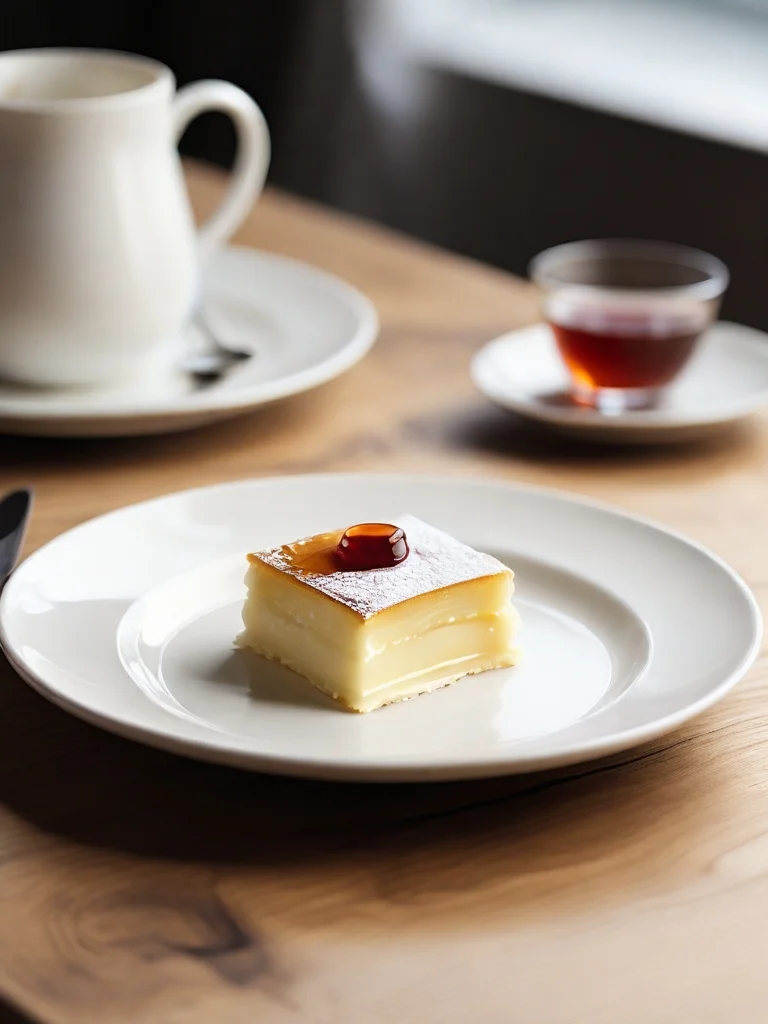The custardy French dessert NYT is a rich, creamy delight that is simple to make yet luxurious in taste. This classic French treat brings the smooth, velvety texture of traditional French custards right to your kitchen. Whether you’re a novice baker or an experienced cook, this dessert is sure to impress. Its perfect balance of sweetness and sophistication makes it a fantastic choice for any occasion.
History of the Custardy French Dessert NYT
Origins in France
This beloved dessert draws inspiration from centuries-old French culinary traditions. Custard-based recipes have been a staple of French cuisine for hundreds of years. Early versions appeared in medieval French cookbooks, where they were often used as fillings for pies and tarts. Over time, these simple custom fillings evolved into standalone desserts, cherished for their creamy texture and delicate flavor.
The Evolution of the Recipe
As French cuisine developed, chefs refined custard recipes, giving rise to iconic desserts such as crème brûlée, flan, and clafoutis. Each variation brought a unique twist, from the caramelized sugar crust of crème brûlée to the baked fruit-infused clafoutis. These desserts became staples in French patisseries and home kitchens alike, loved for their balance of richness and elegance.
Popularity in Modern Times
Today, the custardy French dessert NYT remains a timeless classic. You can find it served in Michelin-starred restaurants, quaint Parisian cafés, and home kitchens worldwide. Its appeal lies in its simplicity—requiring only a few basic ingredients—while delivering an indulgent, satisfying experience. Whether enjoyed warm or chilled, it continues to be a favorite among dessert lovers.
Read more our latest Recipe : Cranberry Recipes for Thanksgiving Cups Phyllo Dough Goat Cheese

Cultural Significance of the Custardy French Dessert NYT
A Symbol of French Elegance
French cuisine is known for transforming humble ingredients into culinary masterpieces, and this dessert is no exception. Its smooth texture and delicate sweetness make it a symbol of French sophistication. Often prepared for celebrations, holidays, or intimate gatherings, it represents the country’s deep-rooted appreciation for fine food.
Celebrated in French Cuisine
The custardy French dessert NYT embodies the French culinary philosophy of using simple ingredients to create something extraordinary. Traditional French cooking emphasizes precision, technique, and balance, all of which are essential to achieving the perfect custard consistency. This dessert is a testament to France’s rich gastronomic legacy.
A Global Favorite
Although it originated in France, this custard-based dessert has won hearts worldwide. Many cultures have embraced it, incorporating local flavors and ingredients to create unique variations. Whether served as a comforting homemade treat or a luxurious restaurant finale, its universal appeal remains strong.
Conclusion
The custardy French dessert NYT is more than just a dessert—it’s a reflection of French culinary excellence. With its smooth, creamy texture and refined flavor, it continues to delight dessert lovers across generations and borders. Whether you’re making it for the first time or a seasoned pro, this classic French treat is sure to bring warmth and indulgence to your table.
Custardy French Dessert NYT – A Creamy, Elegant Treat
Description
This custardy French dessert is a timeless classic, loved for its rich, creamy texture and delicate vanilla flavor. Made with simple ingredients like eggs, cream, and sugar, it’s an elegant yet easy-to-make treat that melts in your mouth. Perfect for any occasion, it’s a staple of French patisserie that can be enjoyed warm or chilled.
Ingredients
Instructions
-
Heat the Cream: Warm the heavy cream with vanilla bean (or extract) until steaming but not boiling. Let it infuse for richer flavor.
-
Preheat the Oven: Set it to 160°C (320°F) and prepare a water bath by placing a deep baking dish in the oven.
-
Whisk the Egg Yolks and Sugar: In a separate bowl, whisk the egg yolks, granulated sugar, and salt until pale and slightly thickened.
-
Temper the Eggs: Slowly pour the warm cream into the egg mixture, whisking constantly to prevent curdling. Strain the mixture through a fine-mesh sieve to remove any solids.
-
Fill the Ramekins: Divide the custard evenly among 4 ramekins and place them in the preheated baking dish.
-
Create a Water Bath: Pour hot water into the baking dish until it reaches halfway up the sides of the ramekins. This ensures gentle, even cooking.
-
Bake the Custard: Bake for 35-40 minutes or until the edges are set but the center is slightly wobbly. Remove from the oven and carefully take the ramekins out of the water bath.
-
Cool and Chill: Let the custards cool to room temperature, then refrigerate for at least 2 hours (or overnight) for the best texture.
-
Caramelize the Sugar (Optional): If making crème brûlée, sprinkle brown sugar over the top and caramelize with a kitchen torch or under a broiler. Serve chilled.
Nutrition Facts
Servings 4
- Amount Per Serving
- Calories 220kcal
- % Daily Value *
- Total Fat 15g24%
- Saturated Fat 9g45%
- Cholesterol 200mg67%
- Total Carbohydrate 18g6%
- Sugars 16g
- Protein 4g8%
* Percent Daily Values are based on a 2,000 calorie diet. Your daily value may be higher or lower depending on your calorie needs.
Note
Choosing the Right Cream:
Heavy cream gives the dessert a rich and velvety texture, while light cream or a combination of milk and cream can be used for a lighter version. Avoid using low-fat alternatives, as they may affect the custard’s consistency.
Vanilla Matters:
Using a vanilla bean provides a deep, aromatic flavor. If using vanilla extract, add it after the cream has cooled slightly to preserve its delicate taste.
Tempering the Eggs:
Slowly incorporating warm cream into the egg yolk mixture prevents curdling. Whisking constantly while adding the cream ensures a smooth custard.
Baking in a Water Bath:
This step is crucial for even cooking and preventing the custard from becoming rubbery or overcooked. The water should be hot but not boiling to maintain gentle heat.
Testing for Doneness:
The custard should be set around the edges but still have a slight jiggle in the center. Overbaking can result in a grainy texture.
Chilling for the Best Texture:
Letting the custard chill for at least 2 hours (preferably overnight) allows the flavors to meld and the texture to fully set, creating a smooth and creamy consistency.
Caramelizing for Crème Brûlée:
If making crème brûlée, ensure the custard is completely chilled before adding sugar on top. Using a kitchen torch provides the best caramelization, but a broiler can work if done carefully.
Serving Suggestions:
This custard pairs well with fresh berries, a dusting of powdered sugar, or a drizzle of caramel sauce for an extra indulgent touch.
Cautions:
- Avoid Overheating the Cream: When heating the cream with the vanilla bean, ensure the mixture doesn't boil, as this can cause the cream to curdle or change texture. Heating it just until steaming is ideal.
- Egg Tempering: Be cautious when adding the hot cream to the egg yolks. Pour it in slowly and whisk constantly to avoid scrambling the eggs. If you add the cream too quickly or stop whisking, the eggs may cook prematurely.
- Water Bath Level: Make sure the water in the baking dish does not submerge the ramekins. The water should only reach halfway up the sides to ensure even heat distribution.
- Oven Temperature: Every oven is different, so check the custard 5 minutes before the recommended baking time. Overbaking can cause the custard to become too firm or grainy.
- Cooling and Chilling: Allow the custard to cool to room temperature before refrigerating. Placing hot ramekins directly in the fridge could lead to condensation, affecting the texture.
- Handling Hot Ramekins: Be careful when removing the ramekins from the hot water bath. Use tongs or an oven mitt to prevent burns.



